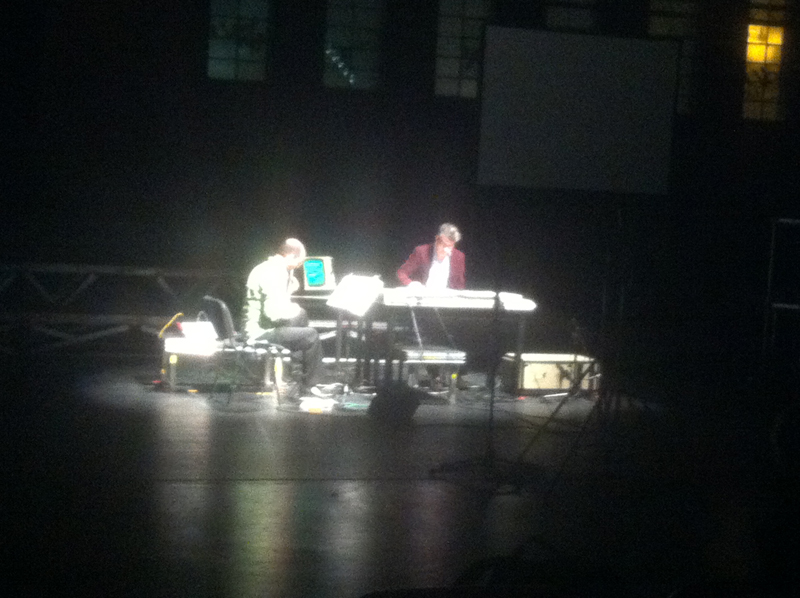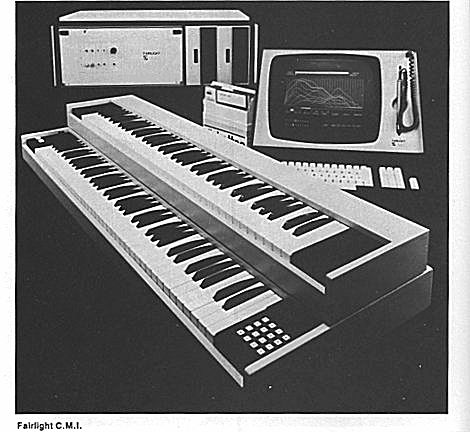the lightest words had the weight of oracles first performance 15.11.2014 Theaterhaus Stuttgart SWR Festival attaca: An archeology of media The Fairlight CMI (Computer Musical Instrument) was introduced in 1979 and was one of the first digital synthesizers and samplers. (The model used for "The lightest words" is from 1983). The instrument is characterised by an aura of the early days of the digital. It is operated via a light pen on a monitor screen or alternatively through commands on an alphanumeric keyboard. When the system disk, an 8-inch floppy disk, is installed or when so-called "voices" and "instruments" are retrieved from the floppy disk the two disk drives emit archaic noises. Apart from the specific aura of the Fairlight I was fascinated by its characteristic sound. Despite the extremely small data size and resolution in comparison to today's sound synthesis and sampling possibilities the sounds are unique and beautiful in their own way (and also quite different from analog synthesizer sounds). The Fairlight also proved to be an extremely well thought-out and versatile instrument: differentiated sonic manipulations are programmable, but can also be controled in real time by sliders and pushbuttons, the touch-sensitive piano keyboard can be scaled to different tunings etc. At first I feared working with the Fairlight would be cumbersome, it was necessary to read the manual (!), enter coded commands, if you want to "save as ...", you have to remove both disks, then insert the "voices" disk in the drive of the "system" disk, then save the data through keyboard commands, and finally swop the floppy disks again and push them back into their ancestral drives. In comparison to the seemingly endless possibilites of a modern computer, triggering countless manipulations within seconds and saving thousands of versions of an operation, working with the Fairlight is characterised by limitations. But within this limitation there exists an infinite number of possibilities. As with any instrument, composition with the Fairlight is ultimately about differentiation and cross-references in the material, therefore devising a system within a system. Moreover, in the composition I worked with the specific sonority of the Fairlight and its digitalness. Digital artifacts or grissling noises in the lower register are included as well as glitches in the sound when polyphonic possibilities are exceeded. Doing sound synthesis on the Fairlight means devising a timbre by drawing envelopes for up to 32 harmonics with the light pen thus creating a "voice". I used this function not to create homogeneous timbres but to produce short phrases which were looped. Because there is no time correction, the loops played on the low keys are much slower than on the high ones and the sound spreads, from slowly meandering phrases in the low register to quasi-melodic units in the middle to short grizzling sounds in the high register. Out of this essentially the structure of the piece developed, and also the naive, speech-like aspect of the sound world. The electric guitar voice was developed from improvised material on the Fairlight. The timbres of the two instruments mix well, and occasionally the otherwise rather pure unprocessed sound of the electric guitar is changed by a digital effects unit from the time of the Fairlight. (The title of the piece references the name of the instrument and also a sentence from a travel novel by Robert Lewis Stevenson - "lightest words" - the lightness and simpleness in the structure of the sounds and their digital-numerical composition - they might have something to say to us, though it may not immediately be evident what this can be.)
for Fairlight CMI Synthesizer and electric guitar. 2014
12.7.2015 Festival Heroines of Sound Radialsystem Berlin
Sebastian Berweck, Fairlight CMI; Seth Josel, electric guitar
"Dazzling sound surfaces, fascinating overtone structures and a clever dramaturgy characterize this work."
Stuttgarter Zeitung 17.11.2014
video-exerpts of the live performance at Radialsystem:
https://www.youtube.com/watch?v=k7PBmJZMRjg
The lightest words had the weight of oracles consists of 11 short pieces.
> live recording 12.7.2015 Festival Heroines of Sound Radialsystem, pieces 6-11

